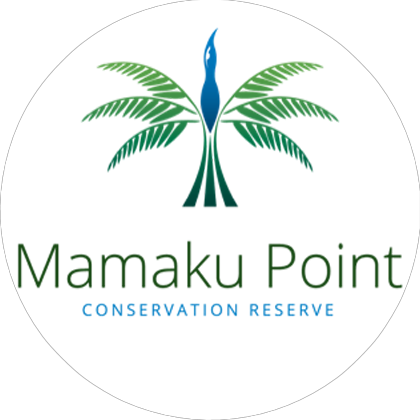Our Fauna
Mamaku Point is a thriving habitat to a large number bird species, long-tailed bats, marine mammals, reptiles, amphibians and invertebrates.
Birds
Among the many birds found in the Reserve are at least 25 native species:
Bellbird | Korimako
Blue Penguins | Korora
Brown Creeper | Pipipi
Fantail | Piwakawaka
Fernbird | Mātātā
Fiordland Crested Penguins | Tawaki
Grey Warbler | Riroriro
Long-tailed Cuckoo | Koekoeā
Morepork | Ruru
Parrots | Kaka
Red-crowned parakeet | Kakariki
Rifleman | Titipounamu
Sacred Kingfisher | Kōtare
Shining Cuckoo | Pipiwharauroa
Silvereye | Tauhou
Sooty Shearwater | Tītī
South Island Pied Oystercatcher | Torea
Southern Brown Kiwi | Tokoeka
Subantarctic Skua | Hākoakoa
Swamp Harrier |Kāhu
Tomtit | Ngiru-ngiru
Welcome Swallow | Warou
White-fronted Tern | Tar
Wood Pigeon | Keruru or Kukupa
Bats
Mamaku Point is home to a population of long-tailed bat, which we are just in the early stages of investigating with help from Ian Davidson-Watts of Davidson-Watts Ecology.
Marine Mammals
The coastline surrounding the reserve is frequented by a variety of marine mammals including NZ fur seals, NZ sea lions and the occasional leopard seal.
reptiles, amphibians & Invertebrates
There are at least 7 known species of reptile, amphibian & invertebrate living within the reserve, including a healthy population of common skink, and at least one species of frog.
The reserve’s population of invertebrates has not been studied extensively, so we are excited that a team from Otago University will be undertaking the first such research project, on stag beetles, in January 2022.
Importantly, Stewart Island weka are not present within the reserve. Although they are native to Stewart Island, their food source includes the invertebrates and lizards that are re-establishing themselves within the reserve, so weka will continue to be precluded from entering the reserve by the biosecurity fence.
Conservation Projects
The Trust’s strategy is to conserve the existing native fauna, to help grow the populations of the resident species, and to seek opportunities to re-establish other absent natives such as:
The Trust has recently helped the Yellow-Eyed Penguin Trust to establish a recovery centre for Rakiura’s troubled yellow-eyed penguin | hoiho population within the Reserve, which was immediately filled with hoiho in need of help…
We would like to see a survey completed on the reserve's lizard population to see if there are resident geckos and would welcome enquiries from interested researchers. We are also interested in helping protect the the Stewart Island green skinks that are now mainly confined to the Mason's Bay and Codfish Island areas, by a translocation into the reserve.
The Trust is particularly interested in the potential to trial the establishment of tuatara within the Reserve. In the face of climate change there is a pressing need to diversify habitats for tuatara and it is the Trust’s understanding that the Reserve represents a very suitable habitat due to its north facing aspect, abundance of invertebrate populations on which tuatara predominantly prey; including beetles, crickets and spiders, and the absence of the predatory weka. With help from Bridget Carter, Anne Besson and Scott Jarvie, we are currently logging ground temperatures in three locations around Mamaku Point in order to assess the viability of these sites for tuatara, since the sex of tuatara hatchlings is determined by the temperature of the ground in which the eggs are incubated.
The Mamaku Point Restoration Plan, which details the full range of conservation projects we intend to initiate over the next 10 years, can be viewed here.


